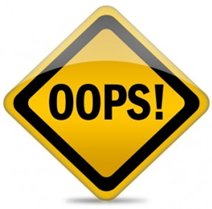Advertisers and marketers do a great job of convincing consumers to buy products (often products they do not even require); however, through the accounts of history they have gotten things wrong, occasionally. Product naming is an imperative part of marketing and branding. This is where a lot of brands may make expensive mistakes if they fail to understand the local language and slang of the country they are planning to market their products. Here is a list of few such names that turned into international boundary blunders.

Mazda LaPuta (in Spanish: ‘the whore’)
The name is taken from the book Gulliver’s Travels written by Jonathan Swift, however, it is difficult for the brand to explain this to Spanish speakers. For them, the word means – ‘the whore.’
FITTA (in 3 Nordic languages: ‘Woman’s private parts’)
FITTA was ultimately renamed ‘the Jazz’ for the Scandinavian market after Honda discovered that FITTA is actually a colloquial term for woman’s private parts in around 3 Nordic languages.
PINTO (a Brazilian Portuguese slang meaning: ‘small male genitals’)
The carmaker Ford thought the better of this name as soon as they come to know that the word is a Brazilian Portuguese slang, which means ‘small male genitals.’ This is definitely not the image they were trying to promote. The car was renamed ‘Corcel’ afterword, which means ‘horse.’
Buick LaCrosse (in French: ‘masturbating teenagers’)
When Buick launched the ‘LaCrosse,’ they didn’t think that it may turn out to be an embarrassment. In French-speaking Quebec, the meaning of the word is ‘masturbating teenagers.’
Conclusion
Mentioned above are just few of the examples of car names gone wrong for international automobile lovers. When it comes to language, even a single word with incorrect meaning can harm your sales. Do you have any more examples of brand names gone wrong? Share in the comments section.